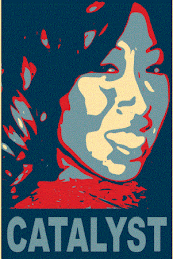Today’s audiences have ubiquitous access to celebrities with the internet and broadcast news’ up-to-the-minute coverage, making the task of regaining credibility tougher than ever. Has Tiger Woods “dropped the ball” when it comes to responding immediately to allegations, or having his wife, Elin, by his side to visually assuage any doubts about their troubled marriage? Perhaps. What he has succeeded in doing is hiring good writers to craft a decent public apology (Frohlichstein, Vitello).
In a hyper-controlled room of ESPN and Tiger-approved journalists, stakeholders and his dear old mother, Golf legend and Nike spokesperson Tiger Woods broke a three-month silence to publicly apologize and address rumors on February 19. In his public statement, Woods used several strategies in an attempt to restore his credibility. Credibility is comprised of character, competence, and goodwill (Powers). To properly perform damage control, Woods must regain these characteristics.
One aspect of displaying strong character, Woods must display risk/suffering on behalf of his situation (Powers). Woods’ character had been the pinnacle of sportsmanship and excellence. As a person of mixed ethnicity, he may not have looked the part, but though his skill, he won his way into idolization. Woods became the first billion-dollar athlete, according to Forbes, having amassed that total in winnings, endorsement money, appearance fees and other earnings since joining the PGA Tour in 1996 (DiMeglio). As the face of a new generation playing the gentleman’s sport of golf, he was looked upon to represent integrity and class. Woods says that he had felt entitled. “I felt that I had worked hard my entire life and deserved to enjoy all the temptations around me” (Frohlichstein).
Another aspect of displaying character is having consistent verbal action and behaviors (Powers). He also admitted to seeking “inpatient therapy” to receive guidance for the issues he’s facing (Woods). This reflects on his willingness to share his suffering as well as his earnest attempt to improve.
Woods displays the aspect of character-- “discounting heroism” by saying, “Parents used to point to me as a role model for their kids” (Powers). He apologizes directly to the parents and children.
Woods’ competence and intelligence were evident in the carefully read script. He may have made stupid choices, but he has made a wise choice in selecting public relations professionals to craft his public statement. “Woods used the word “sorry” three times and “apologize” twice; the message of contrition was clear (Frohlichstein).
Another crucial aspect of credibility is goodwill (Powers). Does the audience believe that Woods’ has their best interests in mind? In terms of the delivery of the public statement, perhaps they do. He starts with “every one of you has good reason to be critical of me,” which acknowledges that the message of contrition is for anyone and everyone. He ends the statement saying, “There are many people at home who believed in me. Today I want to ask for your help. I ask you to find room in your heart to one day believe in me again” (Woods).
Woods’ public statement may have been crafted and read well, however image management goes beyond reading in a controlled press conference. Woods fails to recognize his crisis communication spans further than the carefully crafted verbal message. He disregards his that public relations damage control also includes proxemics and chronemics. Unlike Kobe Bryant, who survived rape allegations and losing multimillion dollar endorsements, Woods did not deliver his public address with his wife present. The public endured three months of media speculation of Woods’ mysterious Thanksgiving crash, emergence of mistresses, and suspicion of domestic violence before hearing an apology, whereas Bryant publicly apologized with wife Vanessa by his side only weeks after allegations went public.
Will Tiger Woods ever enjoy the reputation that he once had? Probably never again. Could he reinvent his image to follow the “Kobe” model and allow his athletic prowess to earn bigger, better endorsement deals? Potentially—starting with an impeccable mediapology.
Vitello, Paul. "The Art of the Public Apology." New York Times 19 February 2010: WK2.



No comments:
Post a Comment